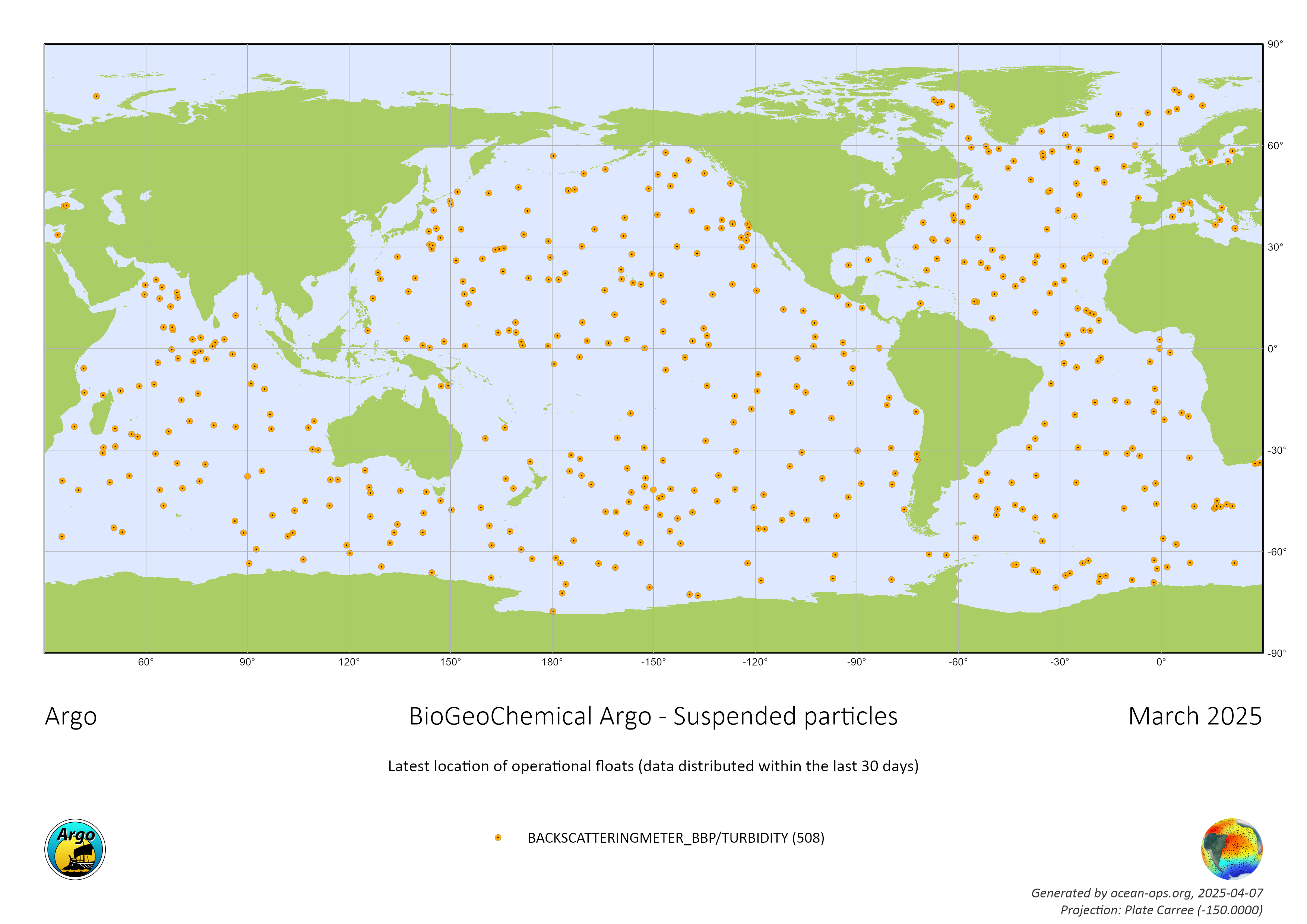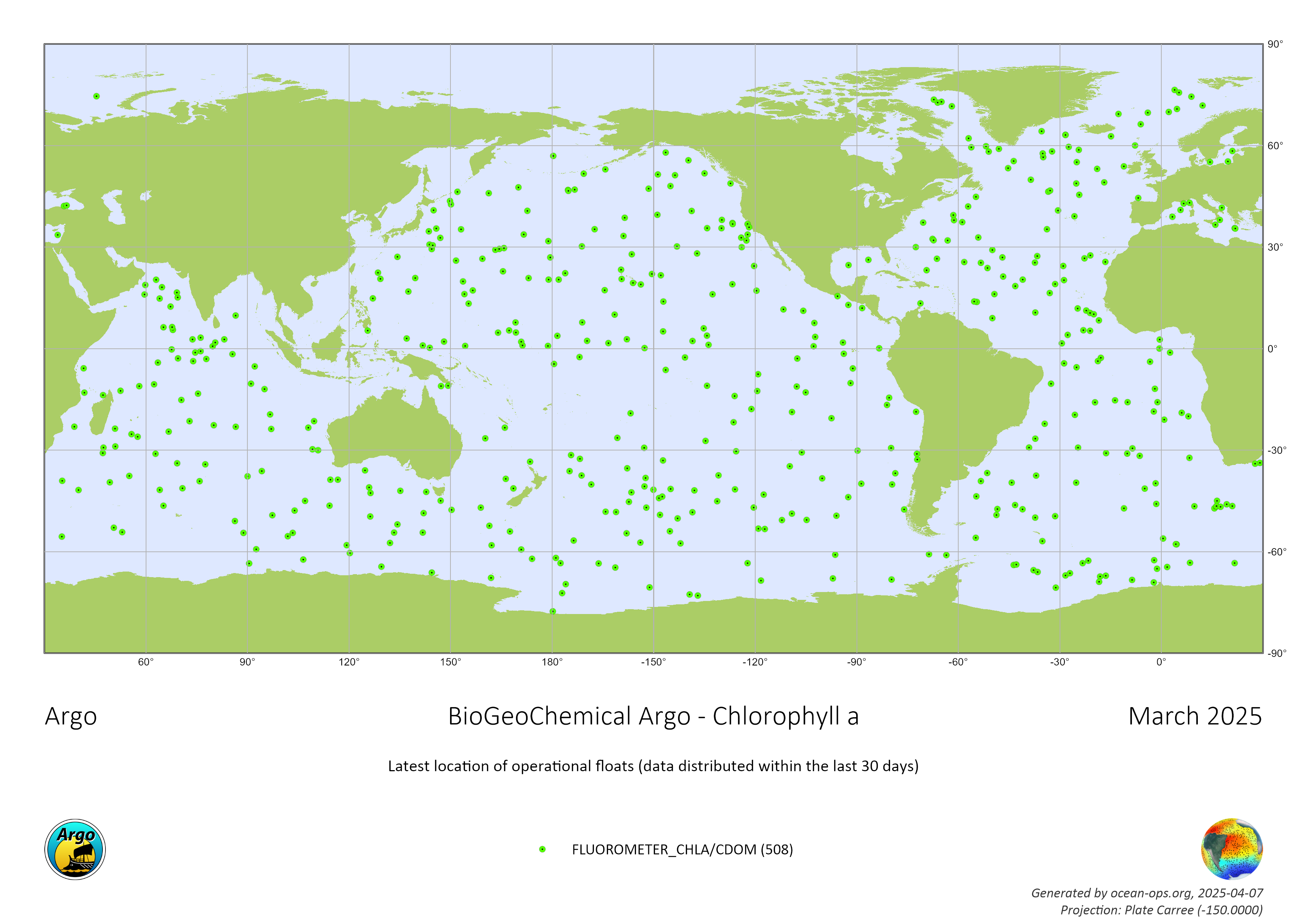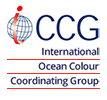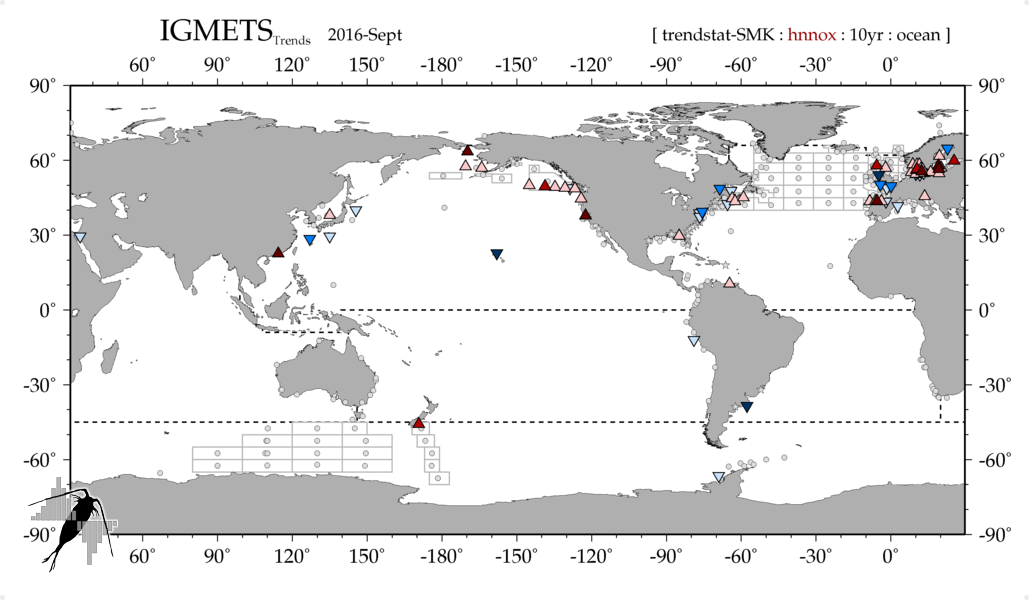Uncategorised
+ more newsParticulate Matter: resources
Monday, 07 May 2018
Following is a list of various resources providing information on research, training or technical support with respect to particulate matter observations in the marine environment. Please contact the IOCCP Office if you have suggestions for documents that you think are missing from this site.
|
2018 Summer Lecture Series: Frontiers in Ocean Optics and Ocean Colour Science: https://ioccg.org/what-we-do/training-and-education/ioccg-sls-2018/#toggles
|
|
University of Maine Ocean Optics Class 2015 (video lectures): https://www.youtube.com/playlist?list=PLQesc2lgL_DVxIS4AlkFigT_jq_5HIChX
|
|
McLane Research Laboratories Inc. Imaging Flow CytoBot (IFCB) User Group https://mclanelabs.com/imaging-flowcytobot/ifcb-user-group/
|
|
Texas A&M Particle Dynamics Group http://people.tamu.edu/~wgardner/~pdgroup//
|
|
getOC: https://github.com/OceanOptics/getOC getOC is a python utility in command line to easily bulk download Ocean Color images from NASA Ocean Data and ESA CREODIAS APIs. Provide a list of positions and dates in a csv file (ex: test.csv), select an instrument, a processing level, and a product type and getOC will get the images. |
|
(in progress) |
|
|
Particulate Matter: status of observations
Monday, 07 May 2018
This page lists of a few source of information describing the known status of ocean observations of parameters describing the Particulate Matter EOV. Overview of current biogeochemical profiling floats with backscatter and fluorometer sensors is provided by OceanOPS. For an overview of sattelite-derived estimates of chlorophyll-a, particulate inorganic carbon or particulate organic carbon, among other relevant parameters, please see the ESA OC-CCI portal (https://www.oceancolour.org) or NASA OceanColour Web (https://oceancolor.gsfc.nasa.gov).
Below are a few recent snapshots with current Biogeochemical Argo and OceanGliders global coverage, and snapshots or annual composite images of Chl-a, PIC and POC derived from ocean colour radiometry measurements.
Biogeochemical Argo
Suspended particles

Chlorophyll-a

Ocean Colour Radiometry - Virtual Constellation (OCR-VC)
Chlorophyll-a V5 - ESA OC-CCI - 05 January 2020

Particulate Inorganic Carbon - NASA VIIRS - 2018 annual composite


from: https://oceancolor.gsfc.nasa.gov/cgi/l3
Particulate Organic Carbon - NASA VIIRS - 2018 annual composite


from: https://oceancolor.gsfc.nasa.gov/cgi/l3
Ocean Gliders

Particulate Matter: references
Monday, 07 May 2018
Following is a list of references to standard protocols, best practices, manuals and user guides related to particulate matter measurements in marine waters, including for validation of satellite ocean colour. Please contact the IOCCP Office if you have suggestions for documents that you think are missing from this site.
|
|
|
IOCCG Protocol Series (2021). Particulate Organic Matter Sampling and Measurement
|
|
IOCCG Protocol Series (2018). Inherent Optical Property Measurements and Protocols: Absorption Coefficient, Neeley, A. R. and Mannino, A. (eds.), IOCCG Ocean Optics and Biogeochemistry Protocols for Satellite Ocean Colour Sensor Validation, Volume 1.0, IOCCG, Dartmouth, NS, Canada. http://dx.doi.org/10.25607/OBP-119
|
|
IOCCG Protocol Series (2019). Beam Transmission and Attenuation Coefficients: Instruments, Characterization, Field Measurements and Data Analysis Protocols. Boss, E., Twardowski, M., McKee, D., Cetinić, I. and Slade, W. IOCCG Ocean Optics and Biogeochemistry Protocols for Satellite Ocean Colour Sensor Validation, Volume 2.0, edited by A. Neeley and I. Cetinić, IOCCG, Dartmouth, NS, Canada. http://dx.doi.org/10.25607/OBP-458
|
|
IOCCG Protocol Series (2019). Protocols for Satellite Ocean Colour Data Validation: In Situ Optical Radiometry. Zibordi, G., Voss, K. J., Johnson, B. C. and Mueller, J. L. IOCCG Ocean Optics and Biogeochemistry Protocols for Satellite Ocean Colour Sensor Validation, Volume 3.0, IOCCG, Dartmouth, NS, Canada. https://ioccg.org/wp-content/uploads/2019/12/protocols-insitu-optical-radiometry-v3.0.pdf
|
|
IOCCG Protocol Series (2019). Inherent Optical Property Measurements and Protocols: Best Practices for the Collection and Processing of Ship-Based Underway Flow-Through Optical Data. Boss, E., Haëntjens, N., Ackleson, S., Balch, B., Chase, A., Dall’Olmo, G., Freeman, S., Liu, Y., Loftin, J., Neary, W., Nelson, N., Novak, M., Slade, W., Proctor, C., Tortell, P., and Westberry. T. IOCCG Ocean Optics and Biogeochemistry Protocols for Satellite Ocean Colour Sensor Validation, Volume 4.0, edited by A. R. Neeley and A. Mannino, IOCCG, Dartmouth, NS, Canada. https://ioccg.org/wp-content/uploads/2019/11/inline-protocols-4.0-nov2019.pdf
|
|
A draft version of the protocol entitled “Measurement Protocol of Absorption by Chromophoric Dissolved Organic Matter (CDOM) and Other Dissolved Materials“, is available.
|
|
A draft version of the protocol entitled “Particulate Organic Carbon Sampling and Measurement Protocols: Consensus Towards Future Ocean Color Missions“, is available.
|
|
Boss E, Waite AM, Karstensen J, Trull T, Muller-Karger F, Sosik HM, Uitz J, Acinas SG, Fennel K, Berman-Frank I, Thomalla S, Yamazaki H, Batten S, Gregori G, Richardson AJ and Wanninkhof R (2022) Recommendations for Plankton Measurements on OceanSITES Moorings With Relevance to Other Observing Sites. Front. Mar. Sci. 9:929436. doi: 10.3389/fmars.2022.929436 Boss, E., Waite, A. M., Uitz, J., Acinas, S. G., Sosik, H. M., Fennel, K., Berman-Frank, I., Cornejo, M., Thomalla, S., Yamazaki, H., Batten, S., Berg, J., Claustre, H., Grégori, G., Karstensen, J., Muller-Karger, F., Richardson, A., Sloyan, B., Wanninkhof, R., … Karp-Boss, L. (2020). Recommendations for plankton measurements on the GO-SHIP program with relevance to other sea-going expeditions. SCOR Working Group 154 GO-SHIP Report. Scientific Committee on Oceanic Research (SCOR). https://doi.org/10.25607/OBP-718 |
|
|
|
|
|
Palevsky, H.I., Clayton, S., et al (2023) OOI Biogeochemical Sensor Data: Best Practices & User Guide, Version 1.1.1. Ocean Observatories Initiative Biogeochemical Sensor Data Working Group, 134pp. DOI: https://doi.org/10.25607/OBP-1865.2
|
|
Neeley, A., Beaulieu, S., Proctor, C., Cetinić, I., Futrelle, J., Soto Ramos, I., Sosik, H., Devred, E., Karp-Boss, L., Picheral, M., Poulton, N., Roesler, C., and Shepherd, A.. 2021: Standards and practices for reporting plankton and other particle observations from images. 38pp. DOI: 10.1575/1912/27377.
|
|
Baldry, K. (ed.) (2021) Biogeochemical Argo Cheat Sheets: Data distribution; Quality control and GDAC; Chlorophyll-a; Optical backscatter; pH; Irradiance; Oxygen; Nitrate. Hobart, Tasmania, Institute of Marine and Antarctic Studies, 8pp. http://dx.doi.org/10.25607/OBP-981
|
|
Wynn-Edwards, C.A.; Davies, D.M.; Shadwick, E.H. and Trull, T.W. (2020) Southern Ocean Time Series. SOTS Quality assessment and control report. Sediment trap particle fluxes Version 1.0. 1997-2018. Hobart, Australia.CSIRO, 70pp. http://dx.doi.org/10.26198/5dfad21358a8d
|
|
Gorsky, G,; Bourdin G.; Lombard F.; et al (2019) Expanding Tara Oceans Protocols for Underway, Ecosystemic Sampling of the Ocean-Atmosphere Interface During Tara Pacific Expedition (2016–2018). Frontiers in Marine Science, 6: 750, 20pp. DOI:10.3389/fmars.2019.00750
|
|
Evers-King, H,; Martinez-Vicente, V.; Brewin, R.J.W. et al (2017) Validation and Intercomparison of Ocean Color Algorithms for Estimating Particulate Organc Carbon in the Oceans. Frontiers in Marine Science, 4:251, 20pp. DOI: 10.3389/fmars.2017.00251
|
|
Boss, E.; Taylor, L.; Gilbert, S.; Gundersen, K.; Hawley, N.; Janzen, C.; Johengen, T.; Purcell, H.; Robertson, C.; Schar, D.; Smith, G.J. and Tamburri, M. (2009) Comparison of inherent optical properties as a surrogate for particulate matter concentration in coastal waters. Limnology and Oceanography: Methods, 7, pp.803-810. 9pp. (ACTVS803-810). http://dx.doi.org/10.25607/OBP-358
|
|
Astor, Y.M., Lorenzoni, L. and Scranton, M. (eds) (2013) Handbook of Methods for the Analysis of Oceanographic Parameters at the CARIACO Time-series Station: Cariaco Time Series Study. Caracas, Venezuela, Fundación La Salle de Ciencias Naturales, 178pp. (Serie Ciencia y Tecnología N° 12); http://hdl.handle.net/11329/384
|
|
Woo, L.M. (2019) Ocean Glider delayed mode QA/QC best practice manual, Version 2.1. Hobart, Australia, Integrated Marine Observing System, 59pp. DOI: 10.26198/5c997b5fdc9bd
|
|
Davies, C. and Sommerville, E. (eds) (2017) National Reference Stations Biogeochemical Operations Manual Version 3.3. Hobart, Australia, Integrated Marine Observing System, 62pp. DOI:10.26198/5c4a56f2a8ae3
|
|
Thomalla, S.J.; Ogunkoya, A.G.; Vichi, M, and Swart, S. (2017) Using Optical Sensors on Gliders to Estimate Phytoplankton Carbon Concentrations and Chlorophyll-to-Carbon Ratios in the Southern Ocean. Frontiers in Marine Science, 4:34, 19pp. DOI: 10.3389/fmars.2017.00034
|
|
Lorenzoni, L., M. Telszewski, H. Benway, A. P. Palacz (Eds.), 2017. A user's guide for selected autonomous biogeochemical sensors. An outcome from the 1st IOCCP International Sensors Summer Course.IOCCP Report No. 2/2017, 83 pp.
|
Ocean Acidifcation: status of observations
Monday, 07 May 2018
Here is the overview of the current status of multi-platform observations related to ocean acidifcation. The GOA-ON data portal shows the distribution of sampling efforts around the globe, while the SDG 14.3 data portal provides an overview of the current data submitted to inform indicator 14.3.1: Average marine acidity (pH) measured at agreed suite of representative sampling stations.
GOAON data portal - February 2021 - live updates at: http://portal.goa-on.org/Explorer

SDG 14.3 Data Portal - February 2021 - live updates at https://oa.iode.org

Particulate matter: data sources
Monday, 07 May 2018
Following is a list of key global information products and data sources related to Particulate Matter EOV. Many regional and national data sources and products are not listed explicitly but often provide contributions to the global repositories and products.
 |
NASA Ocean Colour Web: |
 |
ESA Ocean Colour Climate Change Initiative |
 |
Biogeochemical Argo Global Data Assembly Centres: |
| |
CLIVAR and Carbon Hydrographic Data Office (CCHDO): |
| |
Global Synthesis of POC Using Satellite Data calibrated with Transmissometer and POC Data from JGOFS/WOCE |
 |
OceanGliders Global Data Assembly Centres: FRA: http://www.ifremer.fr/co/ego/ego/v2/ US: https://gliders.ioos.us/erddap/index.html AUS:http://imos-data.s3-website-ap-southeast-2.amazonaws.com/?prefix=IMOS/ANFOG/# |
 |
OceanSITES Global Data Assembly Centres: |
Observations-Modelling Interface: resources
Monday, 07 May 2018
This site (under construction) will provide a list of various resources providing information on research, training or technical support with respect to better integration of ocean observations in marine biogeochemistry models, or use of models to inform observing system design. Please contact the IOCCP Office if you have suggestions for content.
|
2019 IOCCP & BONUS INTEGRAL Sensors Training Course: Combining remote sensing and in situ biogeochemical observations - lecture by Giorgio Dall'Olmo (PML, UK) PDF + video lecture available from HERE
Modeling for best observation design - lecture by Véronique Garçon (LEGOS, France) PDF + video lecture available from HERE
"Smart" data extrapolation - lecture and practical by Peter Landschützer (MPI, Germany) PDF + video lecture available from HERE
From surface measurements to ocean-atmosphere fluxes - lecture by Jamie Shutler (Uni Exeter, UK), practicals by Tom Holding and Ian Ashton (Uni Exeter, UK) PDF + video lecture + FluxEngine materials available from HERE
|
|
GODAE OceanView International Summer School 2017 https://www.godae-oceanview.org/outreach/education-training/gov-summer-school-2017/
|
|
The FluxEngine air–sea gas flux toolbox Holding, Ashton, Shutler et al. (2019); https://os.copernicus.org/articles/15/1707/2019/os-15-1707-2019.html
|
|
ESMValTool - community diagnostic and performance metrics tool for routine evaluation of Earth system models in CMIP
|
|
(in progress)
|
|
|
| (in progress) |
Observations-Modeling Interface: references
Monday, 07 May 2018
This page (under construction) will provide a list of reference documents which review the status or present future direction for better integration between observations and global and basin-scale biogeochemical models. The list will also include a selection of best practice and user guide documents which may assist the modelling community in optimal use of in situ and remote sensing data, or the observing community to use model outcomes to inform the observing system design process.
We are currently populating the site with relevant references. Contact IOCCP Office (This email address is being protected from spambots. You need JavaScript enabled to view it.) with any suggestions you may have.
|
Chai, F., Johnson, K.S., Claustre, H. et al. (2020) Monitoring ocean biogeochemistry with autonomous platforms. Nat Rev Earth Environ 1, 315–326. https://doi.org/10.1038/s43017-020-0053-y
|
|
IOCCG (2020) Synergy between Ocean Colour and Biogeochemical/Ecosystem Models. (ed. Dutkiewicz, S.) Dartmouth, NS, Canada, International Ocean-Colour Coordinating Group (IOCCG), 184pp. (Reports of the International Ocean-Colour Coordinating Group, No. 19). DOI: http://dx.doi.org/10.25607/OBP-711
|
|
Chassignet, E. P., A. Pascual, J. Tintoré, and J. Verron (Eds.). (2018). New Frontiers in Operational Oceanography. GODAE OceanView, 815pp, https://doi.org/10.17125/gov2018
|
|
Wood et al. (2018). Synthesis of Observing System Simulation Experiments (OSSEs): Report describing the robust results obtained from across the models. EU H2020 AtlantOS Deliverable Report D1.5.; https://www.atlantos-h2020.eu/download/deliverables/AtlantOS_D1.5.pdf
|
|
Verrier et al. (2019). Optimal design of regional sampling based on OSSEs. EU H2020 AtlantOS Deliverable Report D1.5.; https://www.atlantos-h2020.eu/download/deliverables/AtlantOS_D5.4.pdf
|
|
|
|
|
|
Baldry, K. (ed.) (2021) Biogeochemical Argo Cheat Sheets: Data distribution; Quality control and GDAC; Chlorophyll-a; Optical backscatter; pH; Irradiance; Oxygen; Nitrate. Hobart, Tasmania, Institute of Marine and Antarctic Studies, 8pp. http://dx.doi.org/10.25607/OBP-981
|
|
|
Ocean Acidification: data sources
Monday, 07 May 2018
Following is a list of key global information products and data sources related to observations of ocean acidification and their biological impacts. Many regional and national data sources and products are not listed explicitly but often provide contributions to the global repositories and products.
 |
GOA-ON Data Portal |
 |
SDG 14.3.1 Ocean Acidification Data Portal |
 |
OA-ICC portal for |
 |
Biogeochemical Argo Global Data Assembly Centres: |
 |
Surface Ocean CO2 Atlas (SOCAT) |
 |
Global Ocean Data Analysis Project (GLODAP) |
 |
NOAA NCEI - Global surface ocean pH, acidity, and Revelle Factor on a 1x1 degree global grid from 1770 to 2100 |
|
NOAA NCEI - Climatological Distributions of pH, pCO2, Total CO2, Alkalinity, and CaCO3 Saturation in the Global Surface Ocean |
Time-Series Efforts: references
Monday, 07 May 2018
Following is a list of references to standard operating procedures, best practices, manuals and user guides (in alphabetical order) related to biogeochemical time series observations. Please contact the IOCCP Office if you have suggestions for documents that you think are missing from this site.
|
Best Practices in Ocean Observing, Frontiers in Marine Science Research Topic https://www.frontiersin.org/research-topics/7173/best-practices-in-ocean-observing |
|
|
|
OceanObs'19 Community White Papers |
|
Benway HM, Lorenzoni L, White AE, Fiedler B, Levine NM, Nicholson DP, DeGrandpre MD, Sosik HM, Church MJ, O’Brien TD, Leinen M, Weller RA, Karl DM, Henson SA and Letelier RM (2019) Ocean Time Series Observations of Changing Marine Ecosystems: An Era of Integration, Synthesis, and Societal Applications. Front. Mar. Sci. 6:393. doi: 10.3389/fmars.2019.00393 |
|
Smith LM, Yarincik K, Vaccari L, Kaplan MB, Barth JA, Cram GS, Fram JP, Harrington M, Kawka OE, Kelley DS, Matthias P, Newhall K, Palanza M, Plueddemann AJ, Vardaro MF, White SN and Weller RA (2019) Lessons Learned From the United States Ocean Observatories Initiative. Front. Mar. Sci. 5:494. doi: 10.3389/fmars.2018.00494
|
|
Other publications |
|
Sutton, A., and J. A. Newton (2020), Reaching consensus on assessments of ocean acidification trends, Eos, 101, https://doi.org/10.1029/2020EO150944. Published on 29 October 2020.
|
|
|
|
Global Intercomparability in a Changing Ocean: An International Time-Series Methods Workshop, 2013 |
|
FixO3 Handbook of Best Practices
|
|
Lorenzoni, L., M. Telszewski, H. Benway, A. P. Palacz (Eds.), 2017. A user's guide for selected autonomous biogeochemical sensors. An outcome from the 1st IOCCP International Sensors Summer Course.IOCCP Report No. 2/2017, 83 pp. |
Time-Series Efforts: status of observations
Monday, 07 May 2018
This page lists of a few source of information describing the known status of ocean time-series observations, both ship-based and moored. An overview, interactive map is under construction.
GOA-ON Explorer
Click on the image below to move to the GOA-ON Explorer.
http://portal.goa-on.org/Explorer
IGMETS Time-Series Explorer
Click on the image to navigate to the IGMETS Time-Series Explorer. Note that only a selection of time-series measuring Biogeochemical EOVs are included in the IGMETS database.
https://www.st.nmfs.noaa.gov/nauplius/media/igmets/explorer/index-00.html
The IOCCP promotes the development of a global network of ocean carbon observations for research through technical coordination and communication services, international agreements on standards and methods, and advocacy and links to the global observing systems. The IOCCP is co-sponsored by the Scientific Committee on Oceanic Research and the Intergovernmental Oceanographic Commission of UNESCO. Read more…
Calendar
|
|
IOCCP meetings, IOCCP-related meetings as well as events related to a wider scope in marine biogeochemistry. |





 A complete and up to date listing of IOCCG protocols is available at:
A complete and up to date listing of IOCCG protocols is available at: 



 Please wait...
Please wait...